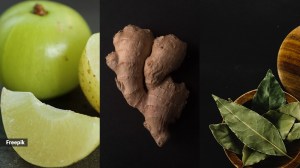Measly relief, no proper treatment…
Of the over 15,000 dead and the 5.7 lakh who have claimed compensation for ‘‘injuries’’ in the Bhopal gas tragedy, a vas...

Of the over 15,000 dead and the 5.7 lakh who have claimed compensation for ‘‘injuries’’ in the Bhopal gas tragedy, a vast majority belonged to the poorer section of the old town. This has compounded worries among those affected, with the paltry compensation of Rs 1 lakh for the dead and Rs 25,000 for the injured hardly sufficient for sustenance particularly when medical costs are so high.
Though there are a dozen-odd dispensaries and hospitals set up for the victims, it is the research for finding an effective mechanism to counter the long-term health ramifications of the gas consumption that is missing. Union Carbide (UC), which merged with Dow chemicals in 2001, has refused to part with studies which detail the effects of the MIC on the living systems. Hampered by this, the doctors are providing symptomatic treatment.
The results were inevitable. In a July 2000 study of 101 prescriptions issued by a clinic of the Bhopal Memorial Hospital Trust, Dr Atanu Sarkar, a New Delhi-based programme officer of the Catholic Health Association of India, found ‘‘26.3 per cent of the drugs prescribed were harmful, 48.5 per cent useless and 7.6 per cent both harmful and useless’’.
The ICMR carried out 24 research projects to document problems, including respiratory, ocular, reproductive, genetic, psychological and neurological damage, but they were wound up in 1994. None of the reports were made public, and even today treatment based on a proper study of the effects of the gas is not available.
Equally worrisome is the vast quantity of contaminants dumped in and around the factory site over the 15 years the factory had been in operation. The toxic waste had made its way into the water that people in the affected colonies consumed.
There have been several studies carried out by various organisations which have revealed contamination of the ground water. The government’s own report, dated November 1996, is damning: ‘‘Ordinarily, COD (Chemical Oxygen Demand) is zero in groundwater but in the areas tested, COD ranged from 45 mg/litre to 98 mg/litre, while the WHO limit for safe drinking water is 6 mg/litre.’’
It was only about six years later that some storage tanks were set up in the affected colonies and people in these areas provided drinking water. But residents are forced to opt for the groundwater claiming the supply of municipal water was inadequate.
Breast milk of the affected also showed high concentration of VOCs (volatile organic compounds like dichlorobenzene) and pesticide HCH. A study by Sristhi in 2002 said, ‘‘this poses a serious concern to infants’’. Aminabi is thus worried about her four-month-old grandson. She lost her husband some months after the leakage and her eldest daughter a few years ago to tuberculosis. ‘‘My younger daughter, born a few months after the leakage, delivered a baby four months ago. She complains of breathing problems and her new-born child suffers from the same ailment,’’ she says.
Photos


- 01
- 02
- 03
- 04
- 05





























